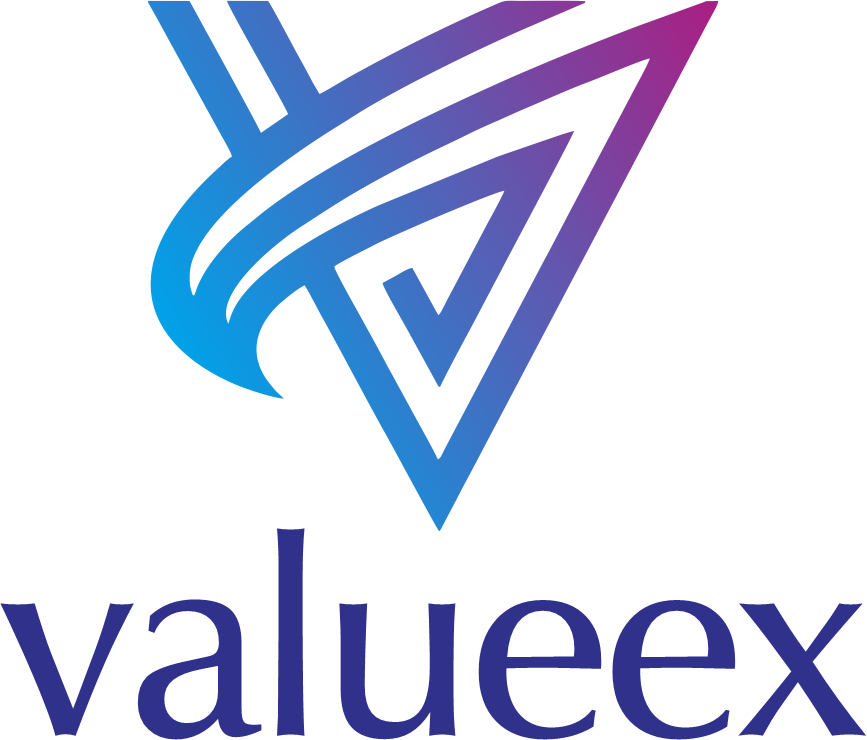Blockchain
Technology Association of Georgia Names Brightwell 2019 FinTech ADVANCE Award Winner

 Reading Time: 1 minute
Reading Time: 1 minute
Brightwell Payments, Inc., a FinTech company that helps global workers get paid as well as send and spend money safely and easily worldwide, announced today the Technology Association of Georgia (TAG), the foremost organization devoted to the advancement of Georgia’s technology industry, has selected Brightwell as a 2019 TAG FinTech ADVANCE Award winner. Brightwell is among six companies with proven innovative fintech solutions selected to receive this year’s award and will be recognized on stage during the FinTech South conference April 22 – 23, 2019 in Atlanta.
In addition to the FinTech ADVANCE award, Brightwell was recently recognized by the Atlanta Business Chronicle as one of Georgia’s 25 Largest FinTech Companies and by the Atlanta Journal-Constitution as one of the city’s 2019 Top Workplaces.
“We are passionate about improving the lives of global workers by giving them a safe and easy way to manage, save and send money while working away from home — a level of financial freedom that was previously unobtainable,” said Mike Gaburo, CEO of Brightwell. “The FinTech ADVANCE award and other recent honors are a testament to our commitment to innovation that solves real problems for our customers and end users. My hat goes off to our diverse, passionate and dynamic team. We have more than tripled the size of our company over the past three years and look forward to continuing to grow and serve new markets.”
SOURCE Brightwell
Blockchain
Blocks & Headlines: Today in Blockchain – May 5, 2025 – Arkham, Blockchair, Worldcoin, Maldives

In an ecosystem defined by perpetual innovation and high-stakes regulatory scrutiny, the blockchain and cryptocurrency industry never pauses. Today’s briefing—“Blocks & Headlines: Today in Blockchain – May 5, 2025 – Arkham, Blockchair, Worldcoin, Maldives”—dives into five compelling stories shaping the narrative: a transformative $9 billion blockchain hub in the Maldives; Sam Altman’s Worldcoin orbs arriving stateside; AI‑enhanced onchain visibility via Arkham and Blockchair; the Blockchain Association’s plea for flexible SEC oversight; and Telegram’s blockchain‑inspired encryption for massive group calls.
Together, these developments spotlight five interlocking themes: diversification of traditionally tourism‑dependent economies, identity and trust models in Web3, the fusion of AI with onchain data, the evolving policy landscape, and privacy‑centric encryption. Across these stories, recurring SEO keywords—blockchain, cryptocurrency, Web3, DeFi, NFTs, tokenization, decentralized identity, onchain analytics, regulation, and privacy—underscore the connective tissue binding today’s headlines.
1. $9 Billion Blockchain Hub on Track to Transform Maldives
Source: U.Today
The Maldives, an archipelagic nation whose economy is heavily tethered to tourism (approximately 30 % of GDP) and fishing (around 10 %), is confronting mounting fiscal challenges: public debt has breached national GDP levels (circa $7 billion), and deficits threaten sovereign stability. In a strategic pivot, Maldivian authorities signed a joint venture with MBS Global Investments—a $14 billion UAE family office—earmarking an $8.8 billion investment in a cutting‑edge blockchain hub. This initiative aims to catalyze a 200 % GDP surge within four years, spawning thousands of jobs and potentially averting sovereign default.
On the surface, relocating blockchain infrastructure to paradise may seem incongruous. Yet by repurposing the country’s geographically dispersed islands into a decentralized Web3 nexus, the Maldives could host data centers powered by renewable oceanic energy, attract DeFi startups, and incubate NFT marketplaces catering to affluent tourists. This diversification blueprint underscores a broader trend: small economies leveraging blockchain to transcend traditional growth constraints. However, critical questions loom—regulatory clarity, environmental footprint, and cybersecurity resilience will determine whether this hub becomes a scalable model or a stranded asset.
Implication: If executed judiciously, the Maldives’ blockchain hub could set a precedent for emerging economies seeking to harness decentralized infrastructure. But success hinges on transparent governance, sustainable energy sourcing, and robust legal frameworks.
2. Altman’s Eyeball‑Scanning Worldcoin Orbs Land in the U.S.
Source: The Register
On May 1, six Worldcoin “Orb” retail locations opened across the United States—Austin, Atlanta, Los Angeles, Miami, Nashville, and San Francisco—offering biometric iris scans in exchange for WLD crypto tokens. Co‑founded by Sam Altman (OpenAI CEO), Alex Blania, and Max Novendstern, Tools for Humanity champions World ID, a blockchain‑based proof‑of‑personhood system designed to authenticate humans versus bots or AI‑generated avatars. Users who scan their irises receive roughly $16 in WLD, enabling them to later verify identity on participating platforms.
While touted as a breakthrough in decentralized identity, the initiative has incited privacy regulators worldwide: South Korea fined the project over $800,000, Hong Kong prohibited operations, and legal probes are active in Germany, Kenya, and Spain. Yet Worldcoin maintains that biometric data is encrypted on-device and purged post‑scan, and with 26 million users globally (12 million scanned), the network seeks to deploy 7,500 Orbs in the U.S. by year’s end.
Opinion: Worldcoin’s retail push exemplifies the friction between innovative identity solutions and privacy norms. The on‑chain distribution of WLD tokens may democratize crypto access, but it also risks normalizing biometric collection without exhaustive regulatory guardrails. The debate between security and civil liberties intensifies as Web3 projects blur lines between voluntary onboarding and pervasive surveillance.
3. AI and Blockchain Explorers ‘Arkham’ & ‘Blockchair’ Reshape Onchain Visibility
Source: Bitcoin News
Blockchain explorers have evolved from static transaction trackers to dynamic investigative platforms, especially with generative AI integration. Two frontrunners—Arkham Intelligence and Blockchair—are pioneering tools to render cryptographic ledgers comprehensible. Arkham’s AI correlates onchain flows with off‑chain entities, enabling analysts to dissect a Binance transaction involving 0.3065 BNB routed through WBNB and Pancakeswap in seconds. Blockchair’s AI assistant, Cuborg, fields natural‑language queries (e.g., “Which Bitcoin address dormant since 2017 just moved funds at block 895,197?”), surfacing actionable intelligence with remarkable speed.
The convergence of machine learning and onchain analytics promises unprecedented transparency for DeFi protocols, NFT markets, and compliance teams. Yet this visibility shift also rekindles the age‑old privacy dilemma: as attribution sharpens, users may flee to privacy coins (e.g., Monero, Zcash) or sophisticated mixers, fracturing onchain provenance. Thus, the community must strike a balance—leveraging AI for due diligence without undermining pseudonymity, a bedrock of decentralization.
Takeaway: Enhanced onchain visibility emboldens regulators and institutional custodians to adopt crypto, but it simultaneously pressures privacy advocates to innovate. The trajectory of DeFi scalability and AML compliance will pivot on how explorers calibrate the transparency‑privacy spectrum.
4. Blockchain Association Urges SEC to Adopt Flexible Crypto Regulation
Source: The Block Binance
On May 2, the Blockchain Association—representing heavyweights such as Coinbase, Ripple, and Uniswap Labs—submitted formal comments urging the U.S. Securities and Exchange Commission (SEC) to embrace an “incremental, flexible approach” under new Chair Paul S. Atkins. The association argued that equity‑style rule frameworks ill‑fit blockchain’s decentralized architecture, and that overly restrictive policies risk ceding global leadership in Web3 innovation. Key recommendations included:
-
Modernizing “best execution” by prioritizing diligence over prescriptive equity norms.
-
Leveraging public exchange APIs for oversight, eschewing bulk personal data collection.
-
Convening public‑private roundtables to iteratively refine tokenization guidelines.
As the SEC grapples with litigation against major crypto firms, the association’s plea underscores a broader policy shift—from adversarial enforcement to collaborative rulemaking. If embraced, this could catalyze a regulatory renaissance, aligning U.S. competitiveness with nascent markets such as the EU’s MiCA and Singapore’s digital asset frameworks.
Analysis: A flexible U.S. regime could anchor global capital flows in American markets. However, in the near term, ambiguity may persist, prompting projects to seek out friendlier jurisdictions. The evolution of DeFi, tokenized securities, and NFT financialization hinges on whether the SEC transitions from litigation‑driven oversight to principles‑based governance.
5. Telegram’s Blockchain‑Inspired Encryption Empowers Massive Group Calls
Source: CCN.com
Messaging titan Telegram has rolled out a major security upgrade: blockchain‑inspired encryption for voice and video group calls, scaling to tens of thousands of participants. Published May 5, 2025, the update employs a distributed architecture reminiscent of blockchain’s consensus model, paired with end‑to‑end encryption and a novel four‑emoji verification system. Users can join calls via links, QR codes, or invites, accommodating up to 200 guests in peer‑to‑peer calls and vastly more in server‑mediated group sessions.
This enhancement cements Telegram’s Web3 orientation—from in‑app NFT galleries to integrated crypto wallets and June’s Grok AI chatbot. By emphasizing decentralized encryption, Telegram seeks to differentiate itself from legacy platforms and curry favor with privacy‑minded Web3 users. The $100,000 unclaimed bounty for encryption breaches further testifies to the platform’s confidence.
Perspective: As social channels become conduits for DAO assemblies, token launches, and remote governance, Telegram’s upgrade anticipates Web3 ’s communal demands. Secure, large‑scale calls could host multichain hackathons, decentralized grant panels, and NFT minting drop parties—ushering in an era where encrypted communications seamlessly integrate with onchain action.
Conclusion: Charting Tomorrow’s Web3 Horizon
Today’s headlines—from island‑wide blockchain sanctuaries to AI‑powered explorers, from biometric orbs to regulatory overtures and encrypted megacalls—illustrate the multifaceted momentum driving blockchain and crypto into mainstream orbit. Key takeaways include:
-
Economic Diversification via Blockchain: Smaller nations can pivot from tourism to tech‑led growth, provided they embed sustainability and legal clarity.
-
Identity & Privacy Trade‑Offs: Worldcoin’s iris scans provoke essential dialogue on biometric ethics versus Sybil‑resistance in decentralized networks.
-
AI‑Driven Transparency: Arkham and Blockchair spotlight the accelerating fusion of AI and onchain analytics, demanding new privacy paradigms.
-
Adaptive Regulation: The Blockchain Association’s SEC proposal signals burgeoning alignment between policymakers and innovators—critical for U.S. leadership.
-
Web3‑First Infrastructure: Telegram’s encryption upgrade underscores the imperative for platforms to bake decentralized security into every layer.
As the industry hurtles forward, stakeholders must navigate these cross‑currents with pragmatic vision—embracing decentralization, protecting user sovereignty, and fostering constructive policy engagement. Tomorrow’s decentralized economy may hinge as much on robust encryption and AI transparency tools as on visionary regulation and sustainable infrastructure projects.
The post Blocks & Headlines: Today in Blockchain – May 5, 2025 – Arkham, Blockchair, Worldcoin, Maldives appeared first on News, Events, Advertising Options.
Blockchain
Valueex (VUEE) Exchange Opens IEO Window, Leading New Opportunities in Global Blockchain Investment
Blockchain
UnitedStaking.com Launches Advanced Crypto Staking Platform with Global Reach and Real-World Impact

UnitedStaking
-
Blockchain5 days ago
Mercurity Fintech’s Chaince Securities Appointed as Strategic Advisor for Classover’s Solana-Focused Treasury Strategy
-
Blockchain7 days ago
PFM Disrupts Wealth Management in 2025: Earn Digital Assets Risk-Free with Zero Fees
-
Blockchain6 days ago
Veriff and Legitify Partner to Streamline Cross-Border Digital Notarisation
-

 Blockchain Press Releases4 days ago
Blockchain Press Releases4 days agoFrom Exchange to Ecosystem Builder: MEXC Celebrates 7th Anniversary at TOKEN2049 Dubai with $300M Ecosystem Development Fund Launch
-
Blockchain4 days ago
HODL 2025: Blockchain’s Brightest Minds. All in Dubai
-

 Blockchain6 days ago
Blockchain6 days agoBlocks & Headlines: Today in Blockchain – April 29, 2025 | Deloitte, TRON DAO, Miden, JPMorgan, Nuvve
-

 Blockchain Press Releases4 days ago
Blockchain Press Releases4 days agoInterlace Debuts at Token2049 to Accelerate Web2-Web3 Integration Across MENA
-

 Blockchain Press Releases5 days ago
Blockchain Press Releases5 days agoMEXC Ventures Announces $300 Million Ecosystem Development Fund at Token2049 Event



































